Last-Minute NYC Holiday Gift Guide 🎁
We’ve created a holiday gift guide with presents for the intrepid New Yorker that should arrive just in time—


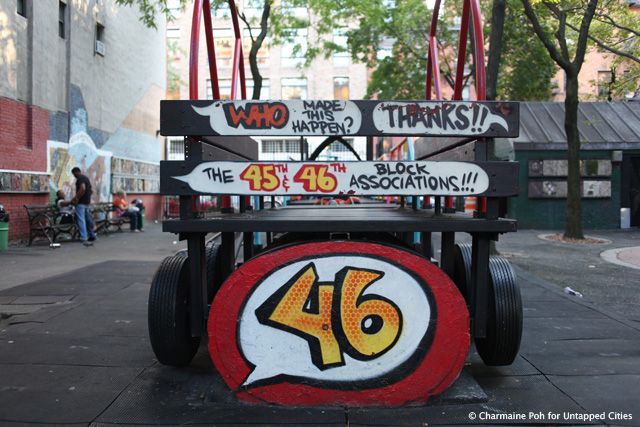
May Matthews Playground on W 46th St, between 9th and 10th Ave, was once a park where many gang murders occurred.
During Murder Is My Business, a walking tour hosted by the International Center of Photography about the photographer WeeGee, we had the opportunity to learn about not only the areas in New York that held meaningful significance to WeeGee, but also the history behind them. One of these areas was Hell’s Kitchen, now also known as Clinton.
Hell’s Kitchen got its tough reputation due to its close proximity to the Hudson River docks, where the first German and Irish immigrants found work and eventually formed gangs in the 19th century. With gangs such as The Hell’s Kitchen Gang, the Gorillas, the Parlor Mob, and the Gophers, the neighborhood soon became known for its violence. And even before the German and Irish, African Americans who worked on the Croton Aqueduct in the 1840s lived in what is now Hell’s Kitchen.
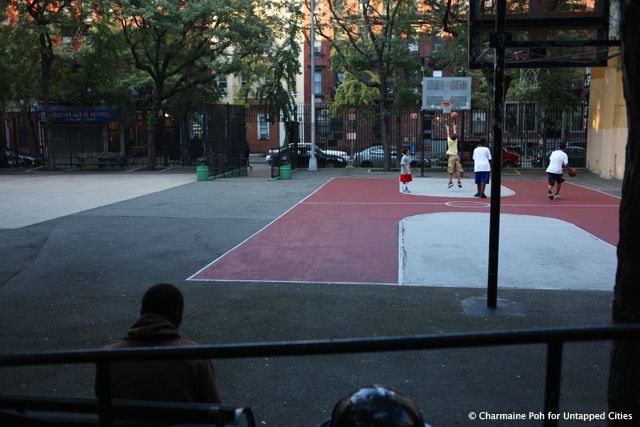
Young boys play basketball in the former May Matthews Park
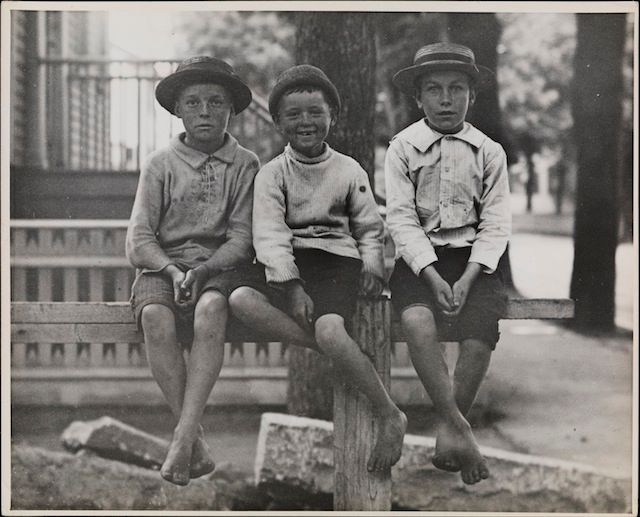
Young New Yorkers of Hell’s Kitchen. Courtesy of MCNY’s digital archives.
Despite this brutal nature, old gang traditions meant that the area was relatively safe, as crimes had to be accounted for by each gang, and businesses were generally left untouched if they had paid their dues. The Westies, one of the last Irish gangs, subverted the tradition and began to work with the Italian mafia to wreak havoc on Hell’s Kitchen’s population. Eventually, gentrification caused many of the working class to move out, and the Westies were arrested. There are still remnants of the old Hell’s Kitchen that are visible, such as the old walk-ups, and several working-class families that remain in the area, although much has been revamped over the last two decades.
The city government, in its efforts to clean New York up, even tried to rename Hell’s Kitchen, although their efforts have not quite succeeded. While official signs and transportation maps point to Clinton Hill, residents and the public still refer to the area by its old name.
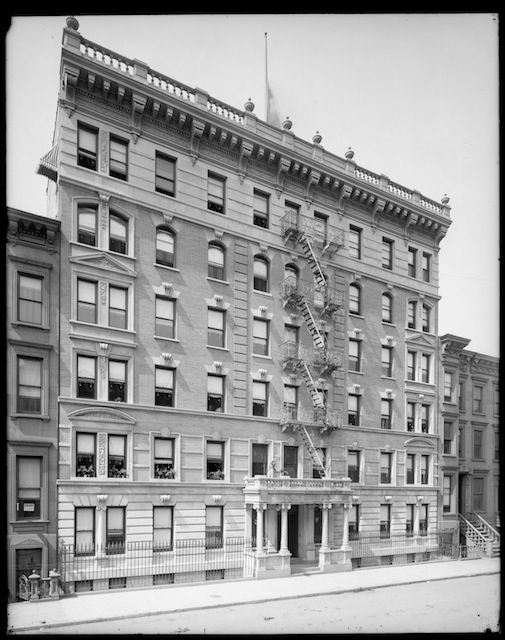
W 46th St Lyric Apartments. Courtesy of MCNY’s digital archives.
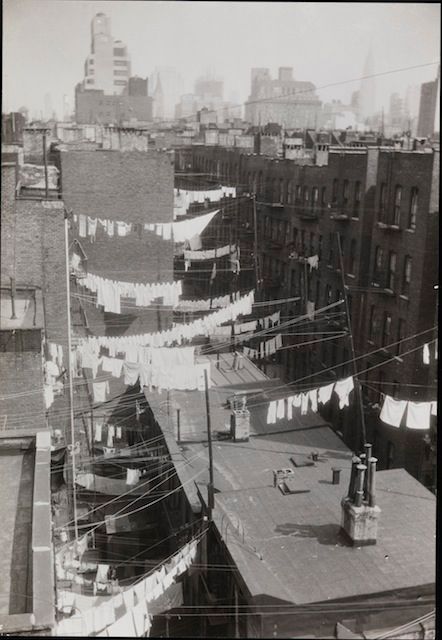
Laundry airing in Hell’s Kitchen. Courtesy of MCNY’s digital archives.
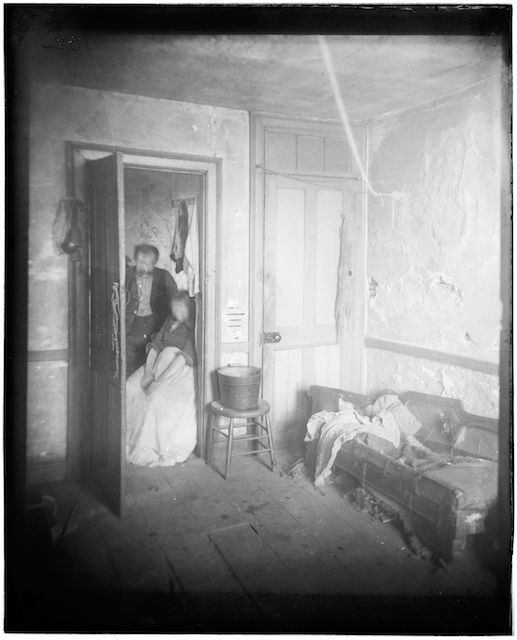
Richard Hoe Lawrence Flat in Hell’s Kitchen “Ruin”. Courtesy of MCNY’s digital archives.
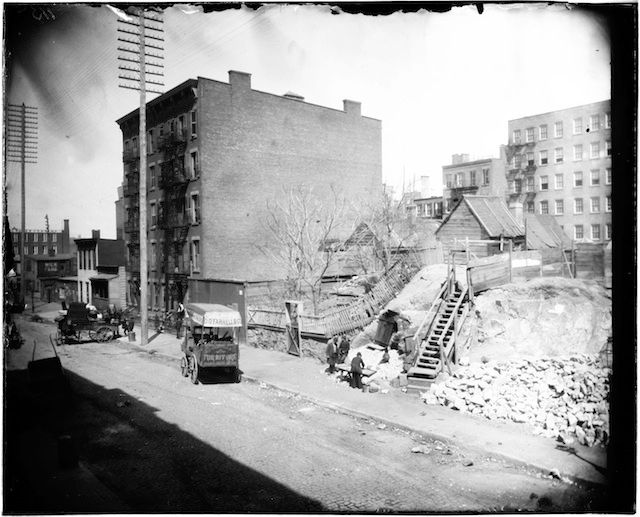
Hell’s Kitchen and Sebastopol (the rocks). Courtesy of MCNY’s digital archives.
Walking through the neighborhood today, it’s easy to simply focus on the newly minted condominiums, fancy restaurants and hip bars that litter the area, and overlook the fact that many of these places were once murder sites. The Hudsonview Terrace apartment tower, the “Battle Row” of W 39th St and many dive bars that have now been converted to upscale dining places are just some examples of where grisly crimes occured. Looking back on history, it seems that gang culture was a way of life. Even The Sacred Heart of Jesus, a Catholic church in the area, was where gang families would marry into each other.
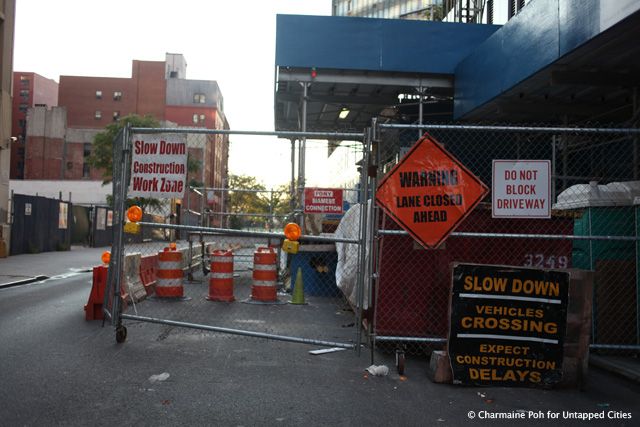
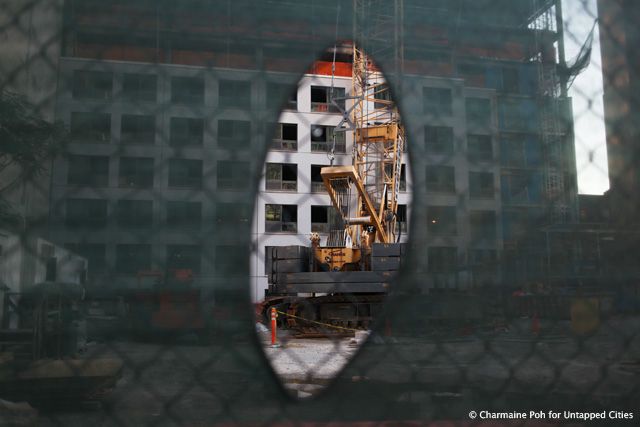
In a fast-paced city like New York, snippets of history can easily be exchanged for the allure of modernization and gentrification. It’s evident in the many construction spots found within the neighborhood alone. Even the original source of the name Hell’s Kitchen has been lost to time. With such rich history behind it, Hell’s Kitchen seems to embody the tough, determined spirit of New York, and it would be a pity if the city forgot these roots.
Should you like to explore these spots yourself, this map by The New York Times has some Hell’s Kitchen points of interest…for those interested in the grittier side of New York City. From the haunted Landmark Tavern, to former speakeasies on Restaurant Row, to locations which all seem to have at some point been known for severed body parts, there’s still a lot to take in while this neighborhood continuously transforms.
Subscribe to our newsletter